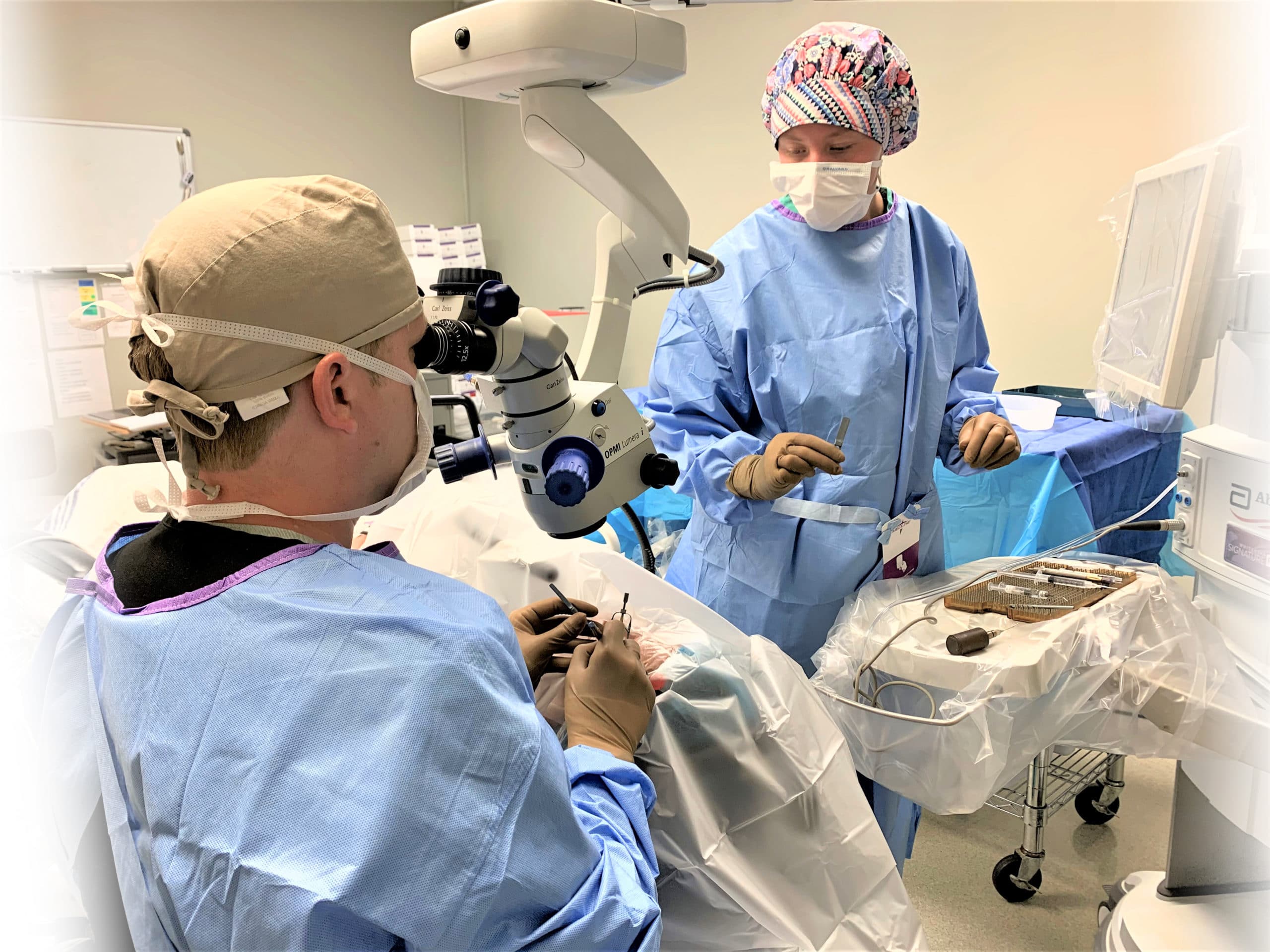
“Making a difference”–it’s a phrase we hear a lot, often as a wish or a goal. But when applied to cataract treatment, it’s a statement of fact: Every day, eye surgeons across the country employ the latest in surgical and artificial lens advances to restore their patients’ eyesight lost to cataracts.
In recognition of Cataract Awareness Month this June, Hattiesburg Eye Clinic is joining with other vision care providers to call attention to a disease affecting the eyesight of half of all Americans over 70. But more importantly, Hattiesburg Eye’s team of surgeons want you to know what can be done to improve vision impaired by cataracts.
For decades, doctors have treated this gradual clouding of the eye’s natural lens with a manual surgical procedure that removes the old lens and replaces it with an artificial Intraocular Lens (IOL). In recent years, though, the procedure itself has been transformed with the advent of computer-guided surgical lasers.
“We still regularly perform the manual procedure, which is highly effective,” says Dr. Ben Pace, eye surgeon with Hattiesburg Eye Clinic. “But surgical lasers, especially the system we’re using, enhance our levels of safety and efficiency, which increases the chances of more satisfying outcomes for our patients.”
That system Dr. Pace refers to is called CATALYS®, a unique surgical system designed from the ground up to treat cataracts. The system contains advanced software that precisely maps an individual patient’s eye for more accurate planning before surgery. Other software then guides the laser during the procedure to automatically make accurate incisions, create safe access to the cataract, correct astigmatism, and break up the old lens. A surgeon then completes the procedure by implanting a new IOL.
Although appropriate for most individual cataract situations, CATALYS® is especially useful for patients with other conditions that might complicate cataract treatment. Patients with dense cataracts, compromised corneas, or astigmatism can significantly benefit from the CATALYS® system. Patsy Rankin fits into that category and noticed immediate results.
“It seemed more and more like I was looking through a hazy, dirty window,” says Rankin. “I knew I would soon need surgery.”
Dr. Pace discussed her options for cataract surgery with her, and she underwent CATALYS® laser cataract surgery for one eye in late May and the other eye a week later. The results amazed her, especially during the period between the two surgeries. “As I compared what I saw with the eye that had been done and the eye that had not, the difference was astounding. Colors and details were vivid and sharp in the first eye, but still faded and out of focus in the other. That’s when I realized how much my vision had been affected by cataracts.”
With her new IOLs, Rankin can now see without glasses except for reading. If not for her macular degeneration, another type of IOL called Symfony® would have been a great option to correct her near vision as well.
“Symfony® is an extended depth of focus lens that allows patients to see from about 16 inches to infinity,” says Dr. David Richardson, also a surgeon with Hattiesburg Eye. “Many Symfony® patients can read items with medium-sized print and perform most of their daily tasks without glasses.”
Tony Hartfield, a retired firefighter, obtained Symfony® lenses after cataract surgery at Hattiesburg Eye Clinic in early May. His journey began a few months before when he noticed definite changes in his vision.
“I began noticing halos around oncoming car headlights while driving at night,” says Hartfield. “It got to the point I couldn’t tell which lane the cars were in.”
After an eye exam that confirmed visually significant cataracts, Dr. Pace recommended treatment with the Symfony® Toric IOL to improve his distance and near vision. In addition to improving his sight over various distances, the advanced Toric IOL would also help correct his astigmatism, a focusing condition caused by an irregular-shaped cornea. For patients with significant astigmatism a Toric lens is recommended, and the Symfony® Toric provides vision correction for these patients at distance and near.
Although he underwent a manual procedure, Hartfield’s experience was similar to Rankin’s. “I’d say each surgery was less than twenty minutes–and I felt no pain from start to finish.”
Within a short time, Hartfield noticed dramatic changes in his eyesight–besides more color vibrancy, details in the distance were much sharper. “I make deliveries part-time for a florist and I began to realize I could read street signs and house numbers more easily than before.”
A glasses-wearer for over twenty-five years, Hartfield no longer needs any corrective lenses. “The only thing I wear now are sunglasses,” says Hartfield. “The change has been so great I wish I hadn’t waited so long to get checked.”
Although cataract treatment has been restoring vision for decades now, these latest advances now give people greater opportunity to experience a level of eyesight beyond their expectations. That’s why incorporating the latest in vision care technology is a top priority at Hattiesburg Eye Clinic.
“Our goal is to bring the best technology we possibly can to our patients,” says Dr. Todd Williamson, also a surgeon with the Hattiesburg Eye team. “We want them to achieve the best eyesight that’s possible for their situation.”
Cataract patients like Patsy Rankin and Tony Hartfield now have more options to treat their particular eye conditions and for them, that has made all the “difference” in the world.


